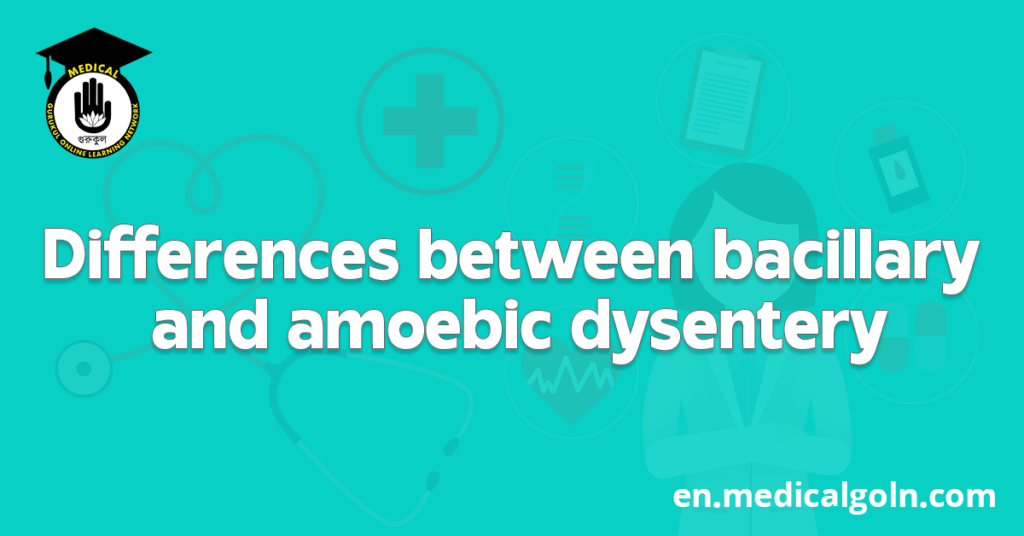Today is our topic of discussion Differences between bacillary and amoebic dysentery
Differences between bacillary and amoebic dysentery
Diagnosis:
The diagnostic signs of dysentery are frequent loose stools with visible blood and/or mucus. Additional features for shigellosis are –
a. Colicky abdominal pain and tenesmus
b. Fever, convulsions & lethargy
c. Dehydration, nausea and vomiting
d. Rectal prolapse
Investigation:
A. dysentery:
Demonstration of Entamoeba histolytica cyst or trophozoite in stool.
B. dysentery:
Stool microscopy (presence of pus cells) & stool culture confirms the diagnosis.
Treatment:
The following patients should be hospitalized –
a. Children with severe malnutrition and dysentery
b. Young infants (<2 months old) with dysentery
c. Patients who are toxic, lethargic, have abdominal distension and tenderness or convulsions
Antibiotic (5 days):
For shigellosis (any one):
Ciprofloxacin & other fluoroquinolones, pivmecillinam and ceftriaxone. If no improvement in 2 days, stop first antibiotic and a second-line antibiotic (e.g. Azithromycin) used.
For amoebiasis:
Metronidazole (in children, 10 mg/kg TDS)
Replacement of fluid and electrolytes:
As management plan of dehydration (mentioned before)
Check for other conditions:
Young infants (<2 months) examined for surgical causes of blood in the stools (e.g., intussusception) and refer to a surgeon, if appropriate.
Avoid drugs for symptomatic relief
of abdominal pain or to reduce stool frequency, as they can worse the illness.
Prevention and control of dysentery (amoebiasis and shigellosis):
1. Detection and adequate treatment of cases & carriers.
2. Provision of adequate and safe drinking water.
3. Proper disposal of human excreta especially from patients, convalescent and carriers.
4. Handwashing before handling or eating food and following defecation.
4. Cleaning and adequate cooking of raw vegetables to avoid eating food contaminated with feces.
5. Control of flies.
6. Cleanliness in food handling and preparation
See also :

